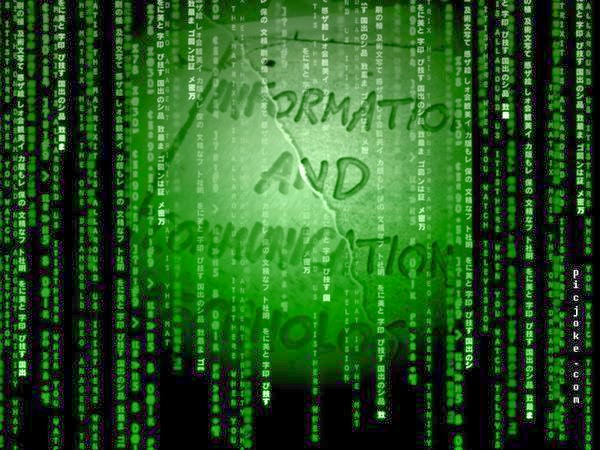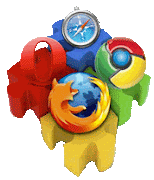1. Start the computer and log on securely using a user name
and password
2. Restart the computer using an appropriate routine
3. Shut down a non-responding application
4. Shut down the computer using an appropriate routine
5.
Use available help functions (search help)(browse help =
contents)
6. Identify the different parts of window
7. Collapse, expand, restore, resize, move a window
8. Close a window
9. Switch between open windows
10.
Identify common file types
11.
Open a text editing application
12.
Enter text into a file
13.
Name and save the file to a location on a drive
14.
Change file status (read-only ,read and write ,hidden)
15.
Sort files in ascending, deseeding order
16.
Recognize good practice in folder and file naming
17.
Rename files, folders
3- use a text editing application (word or
notepad applications)
-Save as (save) Ctrl+s
-characters cannot be used ( <> : “
/ \ ? * | )
4- use available help functions
-online help
5- switch between open windows
6-close windows
7- shutdown non-responding application
8-shut down the computer using an appropriate
routine
n Select and close
each of your currently open windows
n Restart
Example
2
know devices used by an operating system to store files and folders
know how files, folders are measured
understand the purpose of regularly backing up data
understand the benefits of online file storage
open a window to display folders
expand views of drives, folders
collapse views of drives, folders
navigate to a folder file on a drive
create a folder and a further sub-folder
select a file, folder individually or as a group of adjacent, non-adjacent files, folders
select the entire contents of a folder (ctrl + A)
copy files, folders between folders and between drives
move files, folders between folders and between drives
File
management
Main concepts
1-
2- know devices (storage device) Harddisk , flash,cd/dvd
3-know measurements
-
Gb à over million KB
4- understand the purpose of backups
- Keeping
backup copies of your files
- transferring
files from on computer to another
6- understand the benefits of online file storage
This gives users convenient access to their files, wherever
they are , and also gives the ability to share files with others .
Exercise > Work with file and folders
Open
a window to display files and folders
The computer
window will display the following:
Favorites- quick access to locations such as
the contents of Desktop, downloaded files and filing places you have recently
used
Libraries- a way of viewing selected groups of
files and folders that you may require regular access to. You can customize
what is displayed here.
Homegroup–ahomegroup can be created to enable
users of a home network to share libraries, files and printers
Computer
– an expandable list of
all the drives and folders available to you
Expand
folder views (right arrow)
Collapse
folder view (left arrow)
View folder name, size, type (details )
Create folder
Create a sub folder
Navigate (English-form1 to form4)
Select files, folders
Select non-adjacent files (or folders)
Select adjacent files (or folders)
Select the
entire contents of a folder
“the bottom
pane of the window will indicate how many objects are selected”
Copy files, folders (duplicate )
Move files, folders (Removed from to)
Close the window (menu organize)
1- Identify common icons
2- Select and move icons
3- Create a desktop shortcut icon
4- Remove a desktop shortcut icon
5- Use an icon to open a file, folder, application
6- Identify common file type
7- Open a text editing application. Enter text into a file, name
and save the file to a location on a drive.
8- Change the status
9- Sort files in ascending, descending order(name,type,Date
modified, Type,Size)
10-
Recognize
good practice in folder, file naming see example
11-
Rename
files, folders
12-
Delete
files, folders to the recycle bin
13-
Restore
files, folders from the recycle bin
14-
Empty
the recycle bin
15-
Use the
find tool to locate a file, folder
16-
Search
fo riles by all or part of the file name, by content
17-
Search
for files by date modified, by date created, by size
18-
Search
files by using wildcards
19-
View
list of recently used files
20-
Change
the default printer
21-
Install
a new printer on the computer
22-
Print a
document(fileàprint”to prind and to preview the worksheet”)
23-
View a
print job’s progress in a queue (manage printer)
24-
Pause,
re-start, delete ,resume a print job
25-
View
file extensions
Example 3
Open the
computer folder (details)
View file
extensions
Organize ->folder and search options
This extension signifies the type of file being saved.
Identify
common file types
Change file
status
(read only allows the file to be copied or
read but not changed and saved under its original named – it has to be saved
under a new name)
Sort file
Rename file
or folder
Use the find
tool
Search for
files by name, content
Search for
files by date and size
Search files
by using wildcards (characters can be used to replace the part of the name that
you are unsure about)
Click the cross to the right of the search file (to
close the search and return to your original folder
View list of
recently used files
R-Càpropertied àstart menu àcustomize>recent itemàokàstore and display
Delete files, folders
Restore files, folders
Empty the recycle bin
Exercise 2 work with icons
Identify common icons
Create a desktop shortcut icon
Select and move icons
The icons can be arranged on the desktop by name,type,size or date
Remove a desktop shortcut icon
Exercise3
print
Print document
View a print job’s progress in a queue
(paue, re-start, delete a print job)
Printer options
Chang the defulat
printer
Install a new printer on
the computer
1-install a usb printer
2- install a non-usb printer
Example 4
1- View the
computer’s basic system information
2- Change the
computer’s desktop configuration
3- Set, add
keyboard language
4- Install a
software application
5- Uninstall a
software application
6- Use keyboard
print screen facility
7- Understand
what file compression means
8- Compress
files in a folder on a drive(select many file)
9- Extract
compressed files from a location on a drive
10- Understand
what a virus is &the ways a virus can be transmitted onto a computer
11-
Use antivirus software to scan
specific drives, folders, files
12-
Understand why anti-virus software
needs to be updated regularly
Exercise 1: File compression
Files can be “squeezed, pressed, compressed
“to be a smaller size = using compression software.
Files that are
compressed
-
Travel faster
between modems
-
Use less
memory
-
Are an ideal
way of backing up data
Compress files in a
folder on a drive “zipped”
Decompressed or
“unzipped” extract
Exercise 2: antivirus
Understand what virus
- Viruses are computer programs that infect
computers without the knowledge of the
user
- a virus is man made.
-viruses can have
many affects, some mild, some amusing and some devastating -such as deleting
files and preventing your computer from working.
- all will try to damage or change your data in
some way.
Understand the ways a
virus can be transmitted into a computer
From
-
Removable
disk
-
Download
internet file
-
Zipped or
compressed file
-
E-mail
attachment
Never open an e-mail
attachment if you don't know it's from
Always virus check files
that people send/give you
Use anti-virus software
MacAfee
Symantec
Pc cillin
Frisk
software
Virus scanners can be
set to check in various way
-only when
the computer starts up
-to work in
the background all the time the computer is on
-to be used
to scan specific drives, files, and folders only when you want to.
Virus
scanners recognize thousands of viruses of viruses and stop them before they
become active.
"ignore"
"delete" or "store and
reconstruct"
Understand why
anti-virus software needs to be updated regularly
-
Remember that hundreds of new
viruses are introduced every month
Exercise 3 Setup
View the computer's
basic system information
-
To view the widows edition your are using
-
To view the processor type and speed
-
To view the memory installed
-
To view the system type
-
To view name, domain and workgroup settings for you computer
Change the computer's
desktop configuration
n Themes
n Desktop
background
n Screen
saver
n Display
"screen resolution"
n Date
and time
n Sound
n Set
, add keyboard language
n Install
a software application(cd/dvd)or(download from internet)
n Uninstall(remove
program)
Use keyboard print
screen facility (alt+prt sc) to capture
active window









0 التعليقات:
إرسال تعليق
elglaad